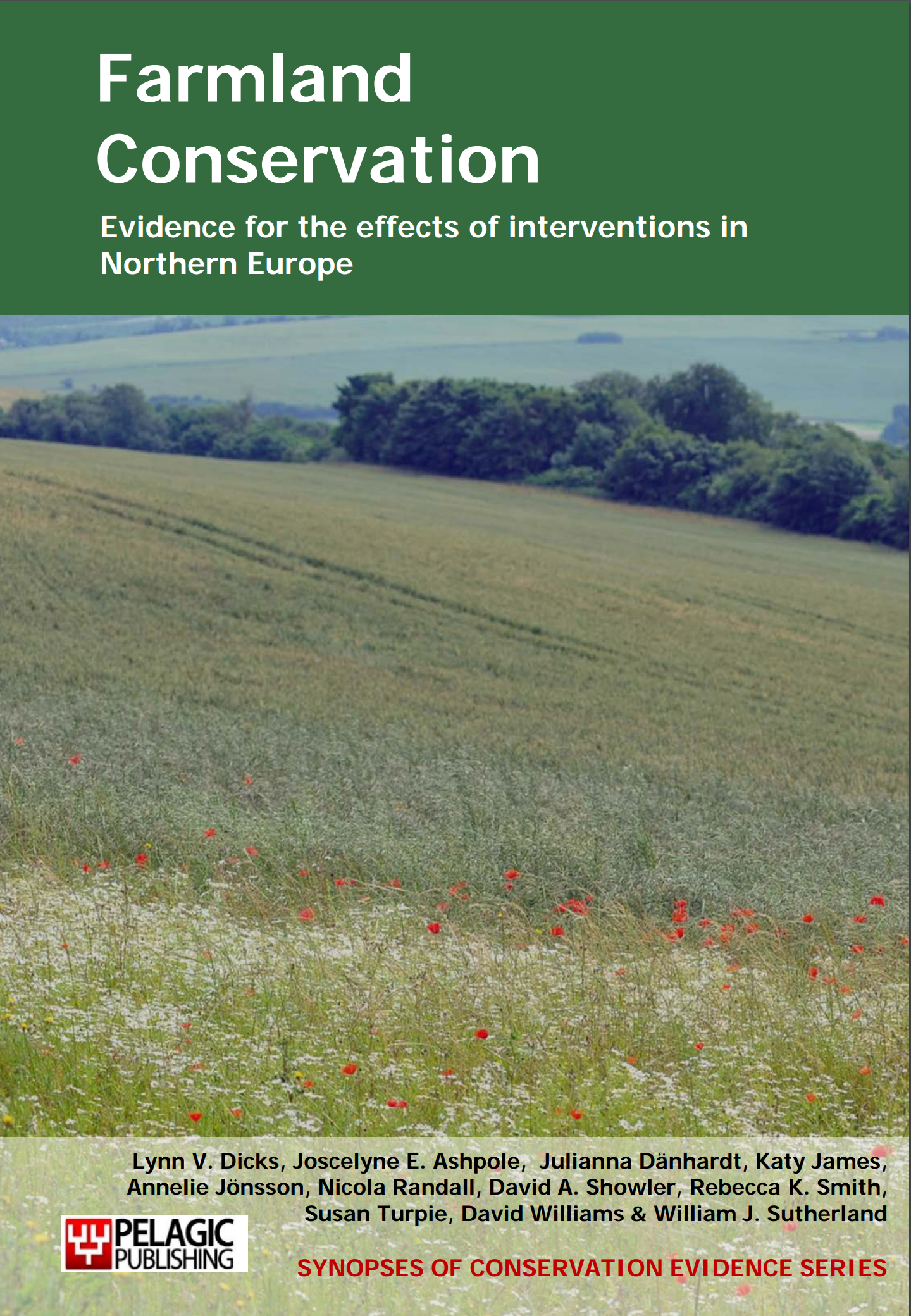Provide owl nest boxes (Tawny owl, Barn owl)
-
Overall effectiveness category Unknown effectiveness (limited evidence)
-
Number of studies: 5
View assessment score
Hide assessment score
How is the evidence assessed?
-
Effectiveness
100% -
Certainty
33% -
Harms
not assessed
Study locations
Supporting evidence from individual studies
A study of 200 barn owl Tyto alba nest boxes over 10 years in the east of the Netherlands (de Bruin 1994) found that with increasing availability of boxes, over 90% of broods in the area became established in boxes and populations increased. Occupancy rates were 32% in Liemers and 36% in Achterhoek, although boxes were occupied significantly less frequently in Liemers (2.8 vs 4.5 years). Between 1967-1975, less than 25% of the barn owl broods in the area were in nest boxes, but with increasing availability, in 1976-1984 over 75% of broods and in 1985-1993 over 90% of broods were in boxes. The number of fledged young was significantly higher in nest boxes (3.4) compared to natural nest sites (2.5). In Leimers there was a significant decline in the breeding population from the early 1960s (7-20 breeding pairs/100 km²) to the end of the 1970s (2-3), the population then stabilized in the 1980s and increased in the 1990s (11-13). In Achterhoek, the population also decreased in the 1960s (to 3-5), but then increased from the 1970s (1976-1982: 5-8) through to the 1990s with increasing availability of nest boxes. In 1967-1984, 75 nest boxes were put up in suitable buildings in Liemers and 135 in Achterhoek. Boxes were surveyed in 1967-1993. Landscape structure and habitats differed in Liemers (350 km²) and Achterhoek (550 km²), which were either side of a river.
Study and other actions testedA before-and-after study at a 150 km2 site in Norfolk, UK (Johnson 1994) found that barn owl Tyto alba population density increased from 15 pairs/100 km2 in 1989 to 27 pairs/100 km2 in 1993, following the provision of 60 nest boxes. Nest boxes were used at the same rate as natural nest sites, and pairs using boxes in trees produced more eggs (but not significantly more fledglings) than other nest types. Nest boxes were located in buildings (43 boxes, a maximum of 11 used in a single year) and on trees (17 boxes, a maximum of five used in a single year).
Study and other actions testedA small controlled study in 1990-1993 in Devon and Cornwall, UK (Ramsden 1998) found that activity in buildings used by barn owls Tyto alba as nesting and/or roosting sites dropped by 68% in nine areas following the conversion or demolition of the building, but was maintained in three other areas where a cavity and access hole were incorporated into the conversion or another nearby (<50 m away) building. There were no changes in eight control areas.
Study and other actions testedA replicated, controlled study in Hungary in 1995-2003 (Klein et al. 2007) using ring-recapture data found that juvenile barn owls Tyto alba fledged from nest boxes were significantly less likely to be recovered alive than those reared in church towers (25% of 75 nest box-reared birds recovered alive one year after fledging vs 40% of 116 church tower-raised birds). This difference in survival was only apparent in the first year after fledging, with similar proportions being recovered six years after fledging (28% of nest box-reared birds vs 41% of church tower-raised birds).
Study and other actions testedA replicated study of almost 800 barn owl Tyto alba nest sites (mainly boxes) over ten years across the UK (Dadam et al. 2011) found that owls were present at 70% of the 5466 sites visited and bred at 54%. Occupancy and the proportion breeding decreased from 2001 to 2009, but were not affected by the number of boxes at each site. Occupancy was greater in rough grassland than arable land, and was lowest in pastoral areas. However the proportion breeding did not differ with habitat. Brood size was larger in rough grassland than arable sites. Female weight at laying did not differ over time, whereas average laying date tended to be earlier and clutch and brood size tended to increase over the study, but not significantly. Occupancy rates were highest in pole boxes at northern sites for jackdaw Coloeus monedula and in the south and east for kestrel Falco tinnunculus. Jackdaw was positively correlated with the number of nest boxes present, kestrel and stock dove Columba oenas were not. Jackdaw was negatively correlated with occupancy of the nest box by barn owl. The Wildlife Conservation Partnership monitored 159-200 nest boxes (‘pole-box’ or ‘A-frame’ in trees). From 2002 an additional 365-593 Barn Owl Monitoring Programme Network sites were also surveyed. Repeat visits were made to sites during the barn owl nesting season (April-October) to assess occupancy, gather breeding statistics and ring adults and chicks.
Study and other actions tested
Where has this evidence come from?
List of journals searched by synopsis
All the journals searched for all synopses
This Action forms part of the Action Synopsis:
Farmland Conservation
Farmland Conservation - Published 2013
Farmland Synopsis





)_2023.JPG)














